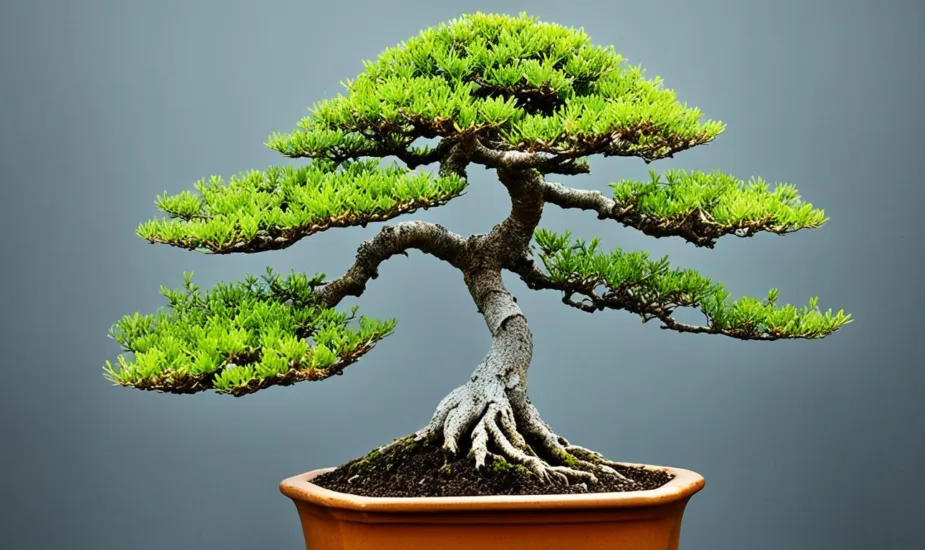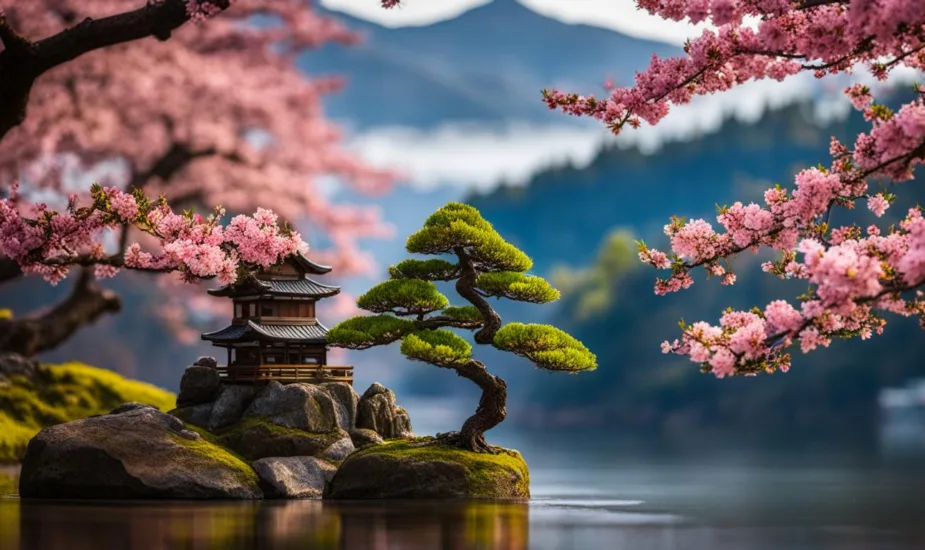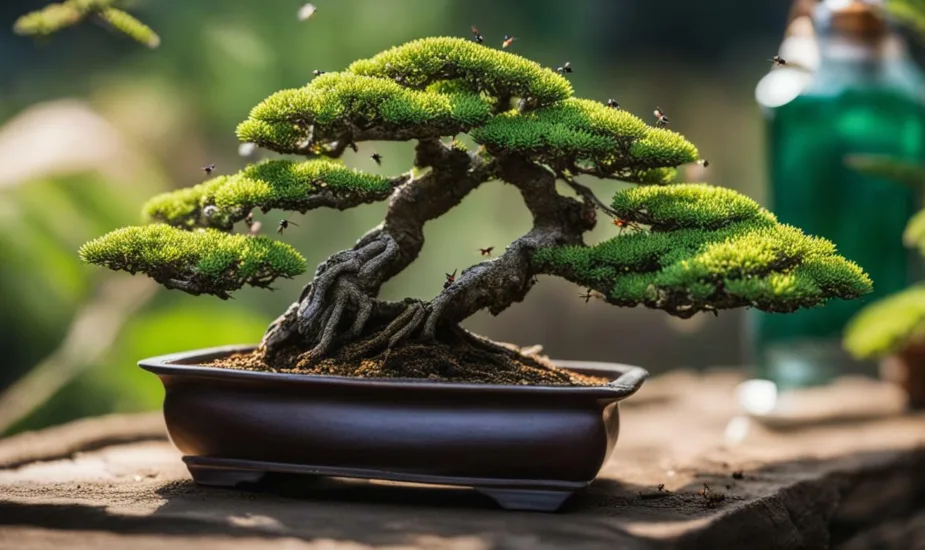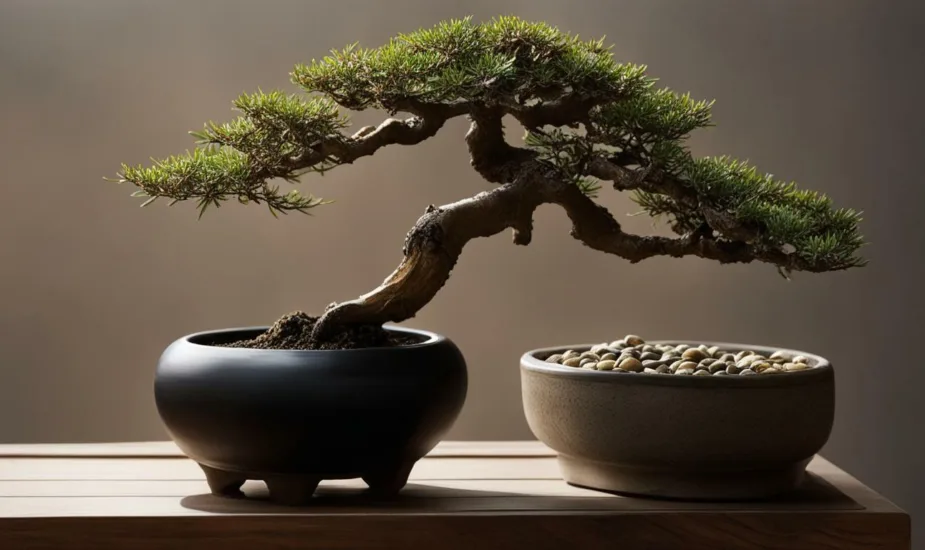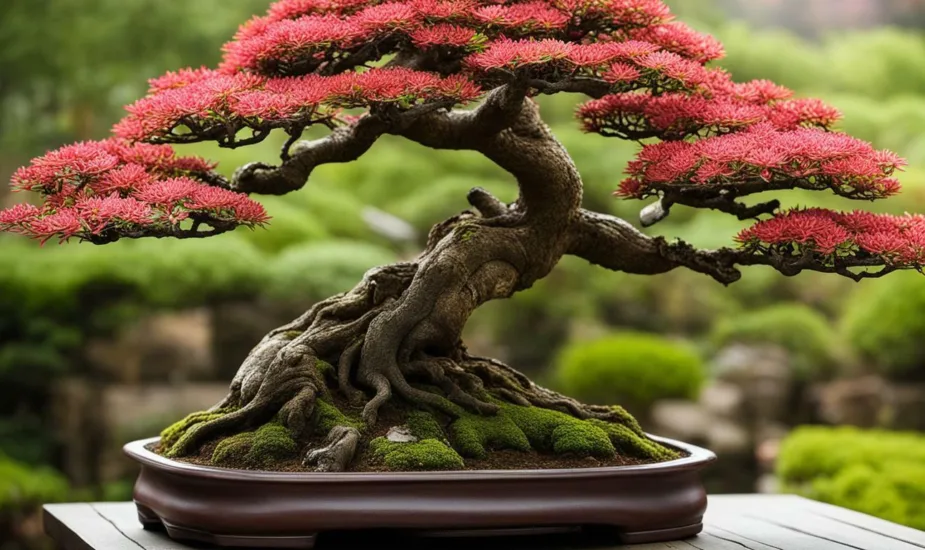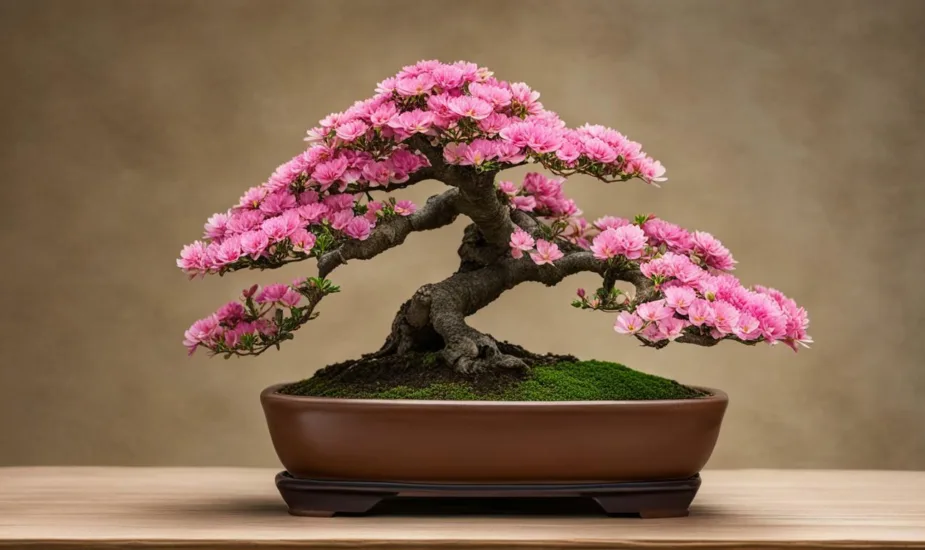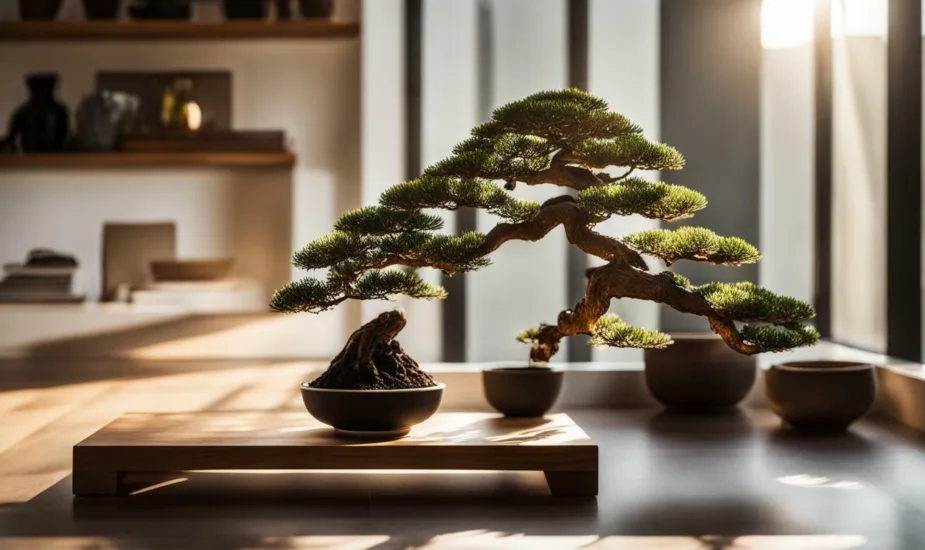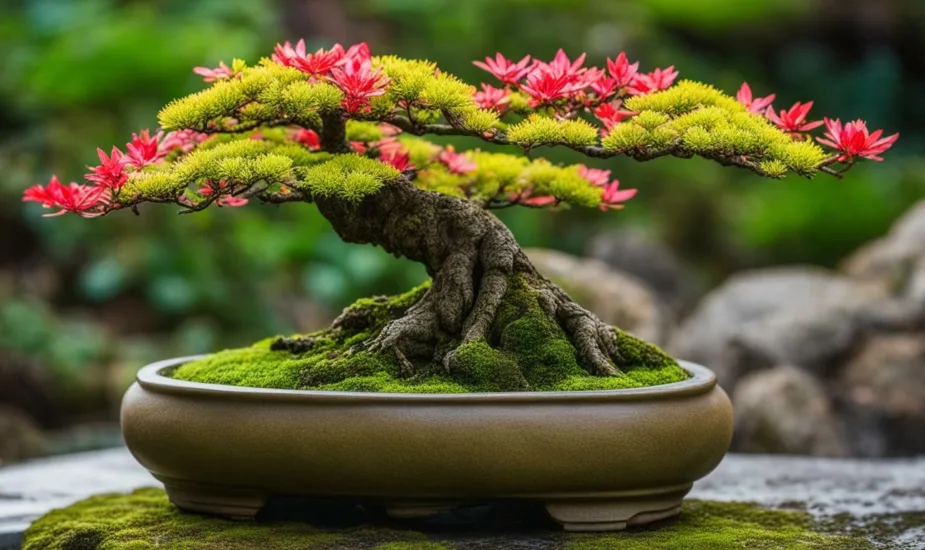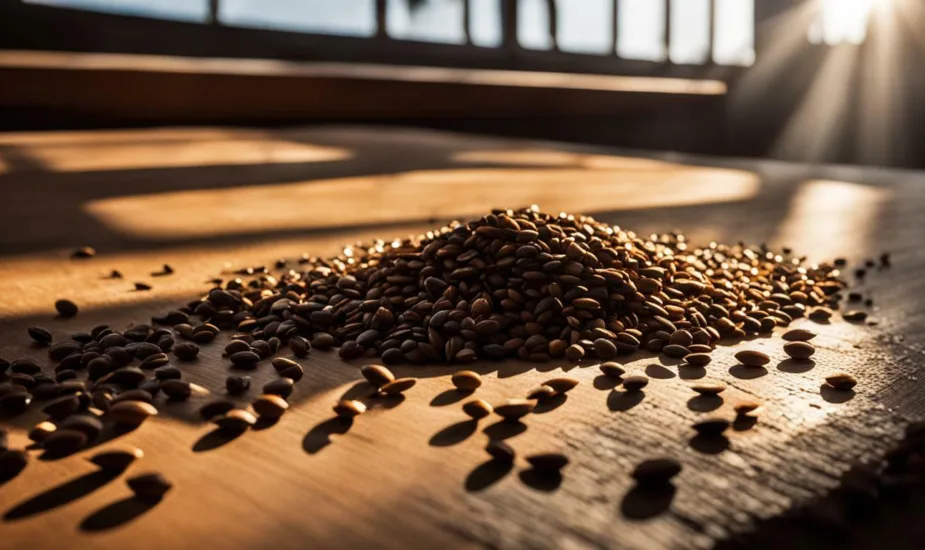Elevate Your Garden: Unveiling the Magic of Outdoor Bonsai Trees
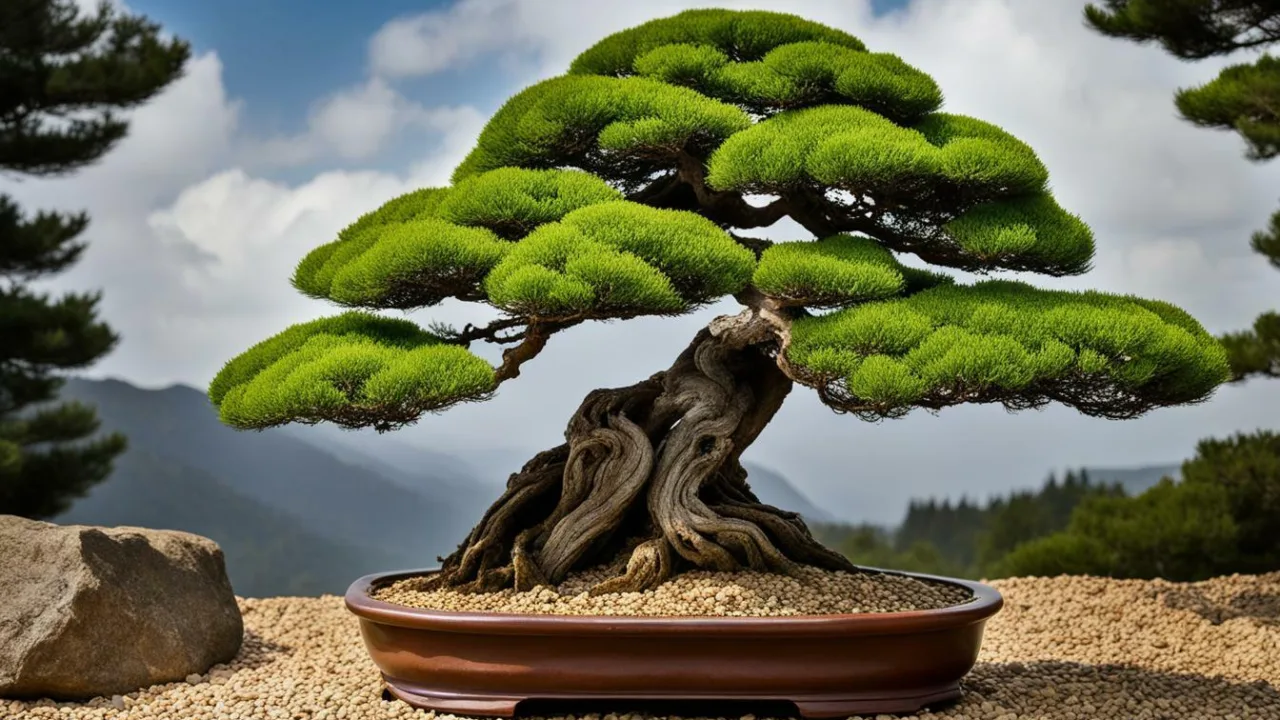
My Journey with Outdoor Bonsai Trees
Introduction to Outdoor Bonsai Trees
When it comes to the world of gardening, few things captivate me as much as outdoor bonsai trees. These miniature trees, meticulously pruned and shaped over time, have a unique charm that adds a touch of magic to any garden. In this article, I want to share my passion for outdoor bonsai trees and provide insights into their care and maintenance.
The art of bonsai originated in ancient China and Japan, with its roots dating back thousands of years. The word “bonsai” translates to “tray planting,” which perfectly encapsulates the essence of this art form. Outdoor bonsai trees are cultivated to mimic the appearance of full-sized trees in nature, but on a much smaller scale.
My Personal Experience with Outdoor Bonsai Trees
Over the years, I have embarked on a journey with outdoor bonsai trees that has brought me immense joy and satisfaction. The process of selecting a tree, nurturing it, and shaping it into a living work of art is truly rewarding. It requires patience, dedication, and a deep understanding of the specific needs of each tree species.
One of the most fascinating aspects of outdoor bonsai trees is the wide variety of species available. From the elegant Japanese maple to the resilient Juniper, there is a bonsai tree species to suit every gardener’s taste and skill level. For more information on popular species, check out our article on bonsai tree species.
Caring for outdoor bonsai trees is an art in itself. Each tree has unique requirements for sunlight, water, and nutrients. Finding the right balance is crucial for their health and long-term survival. I have learned the importance of providing the right conditions, such as placing the tree in a suitable location that receives the correct amount of sunlight and protecting it from extreme temperatures.
Watering and fertilizing techniques are also vital for the well-being of outdoor bonsai trees. Too much or too little water can harm the roots, while improper fertilization can lead to nutrient deficiencies or excessive growth. Understanding the specific needs of each species is key to maintaining a thriving bonsai tree. For more information on caring for bonsai trees, refer to our article on bonsai tree care.
My journey with outdoor bonsai trees has taught me valuable lessons in patience and persistence. It takes time and effort to shape a bonsai tree into its desired form. Mistakes and setbacks are inevitable, but they serve as learning opportunities. With each challenge I face, I grow as a gardener and gain a deeper understanding of the art of bonsai.
If you’re considering embarking on your own bonsai journey, I encourage you to explore the world of outdoor bonsai trees. They offer a unique gardening experience that combines artistry and nature in a captivating way. Whether you’re a beginner or an experienced gardener, outdoor bonsai trees have something to offer everyone. For those interested in indoor options, our article on indoor bonsai trees provides insights into that realm as well.
Stay tuned as we delve deeper into the magic of outdoor bonsai trees and uncover the history, care techniques, and tips for success. Together, let’s elevate our gardens with the enchanting beauty of outdoor bonsai trees.
The Magic of Outdoor Bonsai Trees
Bonsai trees have a rich history and a unique charm that captures the imagination of gardeners around the world. In this section, let’s explore the history and origins of bonsai and discover what makes outdoor bonsai trees so special.
History and Origins of Bonsai
Bonsai, which translates to “tray planting,” originated in ancient China and Japan. The art of bonsai cultivation can be traced back thousands of years, with the earliest known records dating back to the 6th century. Initially, bonsai was practiced by Buddhist monks who cultivated small trees in pots to bring nature’s beauty into their living spaces.
Over time, bonsai techniques evolved and spread beyond the monastic community. The art form gained popularity among the Japanese elite during the Kamakura period (1185-1333) and eventually reached a broader audience. Bonsai became a symbol of refinement and artistic expression, showcasing the harmony between humans and nature.
What Makes Outdoor Bonsai Trees Special
Outdoor bonsai trees, as the name suggests, are specifically suited for outdoor cultivation. While indoor bonsai trees have their own appeal, outdoor bonsai trees offer a unique connection to nature and the changing seasons. The ability to witness the growth and transformation of a tree in an outdoor setting is truly magical.
One of the distinguishing features of outdoor bonsai trees is their ability to withstand the natural elements. These trees are carefully selected based on their hardiness, adaptability, and ability to thrive in specific climates. Different species of trees, such as junipers, maples, and pines, are popular choices for outdoor bonsai. For more information on bonsai tree species, refer to our article on bonsai tree species.
Outdoor bonsai trees also provide a sense of tranquility and a connection to nature. As you care for your outdoor bonsai, you become attuned to the subtle changes in the environment, from the gentle sway of branches in the wind to the delicate blossoms that herald the arrival of spring. The art of bonsai encourages mindfulness and a deep appreciation for the beauty of the natural world.
To ensure the health and longevity of outdoor bonsai trees, proper care and maintenance are essential. This includes providing the right amount of sunlight, proper watering techniques, and regular pruning. For detailed guidance on caring for bonsai trees, refer to our article on bonsai tree care.
With their rich history, unique aesthetic appeal, and connection to nature, outdoor bonsai trees offer a captivating and rewarding experience for gardeners. Whether you are a seasoned enthusiast or just starting your bonsai journey, the world of outdoor bonsai awaits, ready to unveil its magic and beauty.
Choosing Outdoor Bonsai Trees
When it comes to choosing outdoor bonsai trees, there are numerous species to consider. Each species has its own unique characteristics and requirements, so it’s important to select one that aligns with your preferences and gardening capabilities. Here, I will explore some popular species for outdoor bonsai trees and highlight factors to consider when making your selection.
Popular Species for Outdoor Bonsai Trees
There is a wide range of species suitable for outdoor bonsai cultivation, each with its own distinct beauty and features. Some popular choices include:
| Species | Description |
|---|---|
| Juniper | Known for their rugged appearance and ability to withstand harsh weather conditions. |
| Pine | Symbolic of strength and longevity, with needle-like foliage and interesting bark patterns. |
| Maple | Loved for their vibrant leaves that change color throughout the seasons. |
| Elm | Admired for their graceful, arching branches and small, serrated leaves. |
| Oak | Impressive trees that develop sturdy trunks and intricate branching structures over time. |
These species are just a few examples of the variety available for outdoor bonsai trees. It’s essential to research specific care requirements for each species to ensure you can provide the necessary conditions for their growth. For more information on different bonsai tree species, check out our article on bonsai tree species.
Factors to Consider When Selecting Outdoor Bonsai Trees
When choosing an outdoor bonsai tree, there are several factors to consider to ensure you make the right choice for your garden. Here are some key considerations:
- Climate Compatibility: Make sure the chosen bonsai species is suitable for your local climate. Some trees thrive in colder regions, while others prefer warmer environments. Consider the average temperature range, humidity levels, and the amount of sunlight your garden receives.
- Size and Growth: Take into account the ultimate size and growth characteristics of the tree. Consider the available space in your garden and whether you prefer a small, compact bonsai or a larger, more substantial tree.
- Maintenance Requirements: Different bonsai species have varying care needs. Consider the amount of time and effort you are willing to invest in maintaining the tree. Some species require more frequent pruning and shaping, while others may have specific watering or fertilizing requirements.
- Aesthetic Appeal: Choose a bonsai tree that resonates with your personal taste and style. Consider the tree’s foliage, bark texture, and overall shape. Visualize how it will complement your outdoor space and bring a sense of natural beauty to your garden.
By considering these factors, you can select an outdoor bonsai tree that suits your preferences and fits harmoniously within your garden. Remember to also explore proper care and maintenance techniques for your chosen tree species to ensure its long-term health and vitality. For more information on bonsai tree care, you can refer to our article on bonsai tree care.
As you embark on your journey with outdoor bonsai trees, take the time to research and learn about different species. Visit a local bonsai tree nursery or consult with experienced bonsai enthusiasts for guidance. With the right selection and proper care, your outdoor bonsai tree will become a captivating centerpiece in your garden, showcasing the beauty and artistry of this ancient horticultural practice.
Care and Maintenance of Outdoor Bonsai Trees
Caring for outdoor bonsai trees is a rewarding and intricate process that requires attention to detail and a deep understanding of their specific needs. To ensure the health and vitality of your outdoor bonsai trees, it’s important to focus on three key aspects: sunlight and temperature requirements, watering and fertilizing techniques, and pruning and shaping techniques.
Sunlight and Temperature Requirements
Outdoor bonsai trees thrive in specific lighting conditions that mimic their natural habitats. Most outdoor bonsai trees require direct sunlight for at least a few hours each day. However, it’s essential to strike a balance, as excessive sunlight can cause sunburn and damage the delicate foliage.
To determine the ideal sunlight exposure for your outdoor bonsai tree, consider the specific species and their light requirements. Some species, like junipers and pines, prefer full sun, while others, like maples and azaleas, thrive in partially shaded areas. Consulting a reliable resource, such as our article on bonsai tree species, can provide valuable insights into the lighting needs of different bonsai tree varieties.
In addition to sunlight, temperature plays a crucial role in the health of outdoor bonsai trees. The ideal temperature range varies depending on the species, but most bonsai trees prefer moderate temperatures between 60°F (15°C) and 75°F (24°C). However, it’s important to note that different species have different temperature tolerances, so it’s crucial to choose bonsai trees that are suitable for your specific climate.
Watering and Fertilizing Techniques
Proper watering and fertilizing are essential for the overall well-being of outdoor bonsai trees. Maintaining the right balance of moisture is crucial to prevent under- or over-watering, which can lead to root rot or dehydration.
When watering your outdoor bonsai trees, ensure that the soil is evenly moist without becoming waterlogged. The frequency of watering will depend on various factors such as the species, climate, and time of year. Regularly check the moisture level by inserting your finger or a moisture meter into the soil. If the top inch of the soil feels dry, it’s time to water. For more detailed guidance on bonsai tree care, refer to our article on bonsai tree care.
Fertilizing outdoor bonsai trees is crucial to provide them with the necessary nutrients for healthy growth. Use a balanced, slow-release fertilizer specifically formulated for bonsai trees. Follow the instructions on the package to determine the appropriate amount and frequency of application. Fertilize your outdoor bonsai trees during the growing season, generally from spring to fall, while reducing or stopping fertilization during the dormant winter months.
Pruning and Shaping Techniques
Pruning and shaping are integral to maintaining the desired form and aesthetics of outdoor bonsai trees. Regular pruning helps to control the growth, enhance branch structure, and promote the development of a compact canopy.
When pruning your outdoor bonsai trees, focus on removing dead, damaged, or overgrown branches. Use clean, sharp pruning tools to make precise cuts and minimize damage to the tree. Additionally, periodic pinching of new growth can help maintain the tree’s desired shape and encourage ramification.
Shaping outdoor bonsai trees involves wiring the branches to guide their growth and create the desired artistic form. Use a soft, flexible bonsai wire to gently wrap around the branches, being careful not to apply too much pressure that could damage or break them. As the branches grow and set into the desired shape, remove the wire to prevent it from cutting into the bark.
Mastering the art of pruning and shaping outdoor bonsai trees may require practice and patience. By learning from mistakes and seeking inspiration from experienced bonsai enthusiasts, you can develop the skills necessary to create stunning outdoor bonsai tree displays. For more tips on getting started with bonsai trees, refer to our article on beginner bonsai trees.
With proper care and maintenance, your outdoor bonsai trees will thrive and enchant your garden with their elegance and beauty. Remember to adapt your care routine based on the specific needs of each bonsai tree species, and enjoy the magical journey of nurturing these miniature masterpieces of nature.
Tips for Success with Outdoor Bonsai Trees
As an avid enthusiast of outdoor bonsai trees, I have learned a few valuable tips that can contribute to your success in growing and nurturing these miniature masterpieces. Here are some tips that I believe will help you along your journey:
Patience and Persistence
Patience is key when it comes to cultivating outdoor bonsai trees. These magnificent trees require time to develop their unique form and character. It may take years for your bonsai tree to mature and showcase its true beauty. Remember, bonsai is an art that requires dedication and a long-term commitment.
Be persistent in your efforts to care for your outdoor bonsai tree. It’s essential to consistently provide the necessary maintenance, including watering, pruning, and shaping. Don’t get discouraged if you encounter challenges along the way. Every setback is an opportunity to learn and grow as a bonsai gardener.
Learning from Mistakes
Mistakes are an inherent part of the learning process when it comes to outdoor bonsai trees. Embrace them as valuable lessons that will enhance your knowledge and skills. Each mistake provides an opportunity to refine your techniques and understand the unique needs of your bonsai tree.
Reflect on your past experiences and identify areas where adjustments can be made. Are there any watering or pruning techniques that didn’t yield favorable results? Learn from these mistakes and apply the knowledge gained to enhance your future care practices. Remember, even experienced gardeners encounter setbacks, so don’t be discouraged by temporary failures.
Finding Inspiration and Support
One of the most enjoyable aspects of cultivating outdoor bonsai trees is the vibrant and supportive community that surrounds this art form. Finding inspiration from fellow bonsai enthusiasts can ignite your creativity and drive to excel. Engage with online forums, join local bonsai clubs, or attend workshops to connect with like-minded individuals who share your passion for bonsai.
Support is crucial on your bonsai journey. Seek guidance from experienced bonsai gardeners who can offer valuable insights and advice. They can provide you with tips specific to your region and the species of outdoor bonsai tree you are cultivating. Don’t hesitate to ask questions and share your experiences within the bonsai community. Together, we can learn and grow as gardeners.
By embracing patience and persistence, learning from mistakes, and finding inspiration and support in the bonsai community, you can elevate your skills and achieve success with outdoor bonsai trees. Remember to explore our articles on bonsai tree species and bonsai tree care for more in-depth information on specific species and care techniques. Happy bonsai gardening!
 Little Garden Tips
Little Garden Tips




